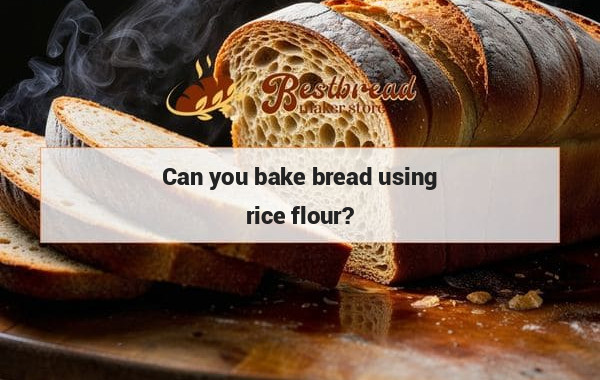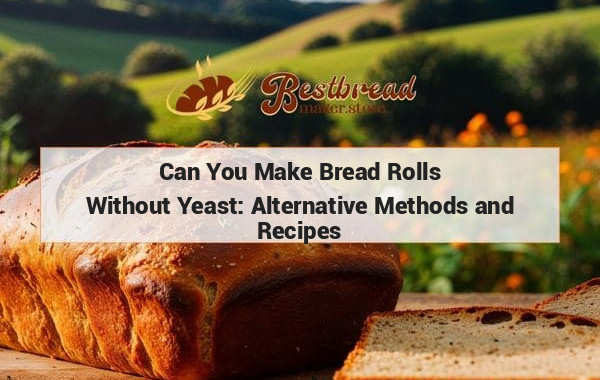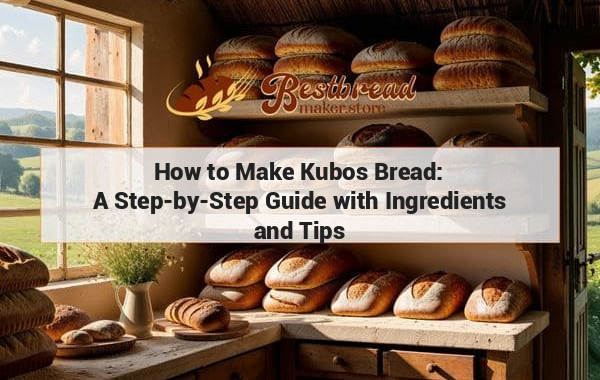Can you bake bread using rice flour?
Yes, you can make bread with rice flour. Rice flour is a gluten-free alternative to wheat flour and can be used to make a variety of baked goods, including bread. Using rice flour in bread recipes can result in a slightly different texture and flavor, but many people enjoy the light and fluffy results. Give it a try if you are looking for a gluten-free or alternative baking option.
Can you make bread with rice flour? Yes, you can! Rice flour is a versatile ingredient that can be used to make gluten-free bread, offering a soft texture and delicious flavor. Many people who need gluten-free options or want to try something new are turning to rice flour as a substitute for wheat flour.
Key Takeaways:
Yes, you can make bread with rice flour. It results in a gluten-free bread that's softer and lighter. If you have dietary restrictions or want to explore gluten-free baking, rice flour is an excellent alternative to traditional wheat flour.
The Importance of Rice Flour in Gluten-Free Baking
When it comes to gluten-free baking, rice flour plays a pivotal role as one of the most popular alternatives to wheat flour. Since wheat contains gluten, which helps with the bread's structure and elasticity, the challenge with gluten-free bread is achieving similar results without gluten. This is where rice flour shines.
Rice flour is made from finely milled rice, either white or brown. It’s known for being light and producing a soft crumb in bread, making it a great option for those with celiac disease or gluten intolerance. Additionally, rice flour is rich in nutrients such as fiber, iron, and calcium, especially when using whole grain brown rice flour.
Why Is Rice Flour Crucial for Gluten-Free Bread?
Gluten-free bread can be tricky to perfect because gluten provides elasticity, structure, and the chewy texture that people often associate with bread. Without gluten, you need alternative flours and binders to replicate that texture, and rice flour is ideal for this. It blends well with other gluten-free flours like tapioca, potato starch, or sorghum, creating a more balanced texture in gluten-free bread recipes.
Rice flour’s fine texture also makes it easier to work with in bread-making compared to other gluten-free flours that can be heavier or more difficult to combine.
How to Make Bread with Rice Flour
Making bread with rice flour follows a similar process to using wheat flour, but with a few adjustments to ensure the bread turns out soft and fluffy. Here's a basic guide on how to make gluten-free rice flour bread at home:
Ingredients:
- 2 cups of rice flour
- 1 cup of tapioca starch (for elasticity)
- 2 tablespoons of sugar
- 1 tablespoon of yeast
- 1 teaspoon of salt
- 1 tablespoon of xanthan gum (a binder that mimics gluten)
- 2 eggs
- 1 ¼ cups of warm water
- 2 tablespoons of olive oil or melted butter
Instructions:
- In a large bowl, mix the rice flour, tapioca starch, sugar, yeast, salt, and xanthan gum.
- In a separate bowl, beat the eggs and combine them with the warm water and olive oil.
- Slowly pour the wet ingredients into the dry mixture and stir until a smooth dough forms.
- Let the dough rest for about an hour, allowing the yeast to activate and rise.
- Preheat your oven to 180°C (350°F) and bake the dough for 45 minutes, or until the top is golden brown.
- Let the bread cool before slicing and enjoy!
By following this method, you’ll get a soft and light gluten-free bread that is perfect for sandwiches or toast.
Close Alternatives to Rice Flour in Gluten-Free Baking
While rice flour is a great choice for making gluten-free bread, there are other flours you can use to achieve different textures or flavors. Some of these include:
Almond Flour
Almond flour is a popular low-carb alternative that’s packed with protein and healthy fats. It adds a slightly nutty flavor and a moist texture to bread. However, almond flour is denser than rice flour, so it’s often mixed with lighter flours like tapioca or coconut flour.
Coconut Flour
Coconut flour is another gluten-free flour that’s light and adds a hint of coconut flavor to baked goods. Like rice flour, it’s commonly used in gluten-free recipes, but it absorbs much more liquid, so it’s often used in smaller quantities.
Sorghum Flour
Sorghum flour is another excellent option for gluten-free bread. It has a mild, slightly sweet flavor, and works well when mixed with other flours like rice flour or potato starch to create a balanced texture in bread.
Benefits of Using Rice Flour for Bread
Using rice flour for bread has many benefits beyond just being gluten-free. Here are some of the main advantages:
Nutritional Benefits
Rice flour, especially when made from whole grain brown rice, is rich in fiber, iron, and calcium. It can be an excellent choice for people who want to boost their intake of these nutrients while avoiding gluten.
Allergy-Friendly
Rice flour is naturally gluten-free, making it suitable for people with gluten sensitivities, celiac disease, or wheat allergies. It’s also free from common allergens like nuts, soy, and dairy, making it a versatile option for various dietary needs.
Versatility in Recipes
Rice flour isn’t just for bread; it’s also great for cakes, pancakes, and even thickening sauces. Its neutral flavor allows it to blend well in many recipes, making it a staple in gluten-free kitchens.
Frequently Asked Questions
1. Can rice flour be used on its own to make bread?
Yes, rice flour can be used to make bread, but for the best texture, it’s often combined with other gluten-free flours like tapioca or potato starch. These flours help mimic the elasticity and structure of gluten.
2. Does rice flour bread taste different from wheat bread?
Rice flour bread is lighter and has a slightly different texture compared to wheat bread. It may not have the same chewiness that comes from gluten, but it’s still delicious and soft.
3. Is rice flour bread healthier than regular bread?
Rice flour bread can be healthier for those who need to avoid gluten, as it offers a gluten-free alternative that’s rich in fiber, iron, and calcium. However, the nutritional value depends on the specific recipe and ingredients used.
4. Can I use rice flour in a bread machine?
Yes, you can use rice flour in a bread machine! Simply follow a gluten-free bread recipe, ensuring you use a binder like xanthan gum to help the dough rise properly.
5. How long does rice flour bread last?
Rice flour bread typically lasts for about 3-4 days at room temperature. To extend its shelf life, store it in the fridge or freeze it for later use.
For those interested in making bread at home or looking for the best bread maker to complement their gluten-free baking, be sure to check out bestbreadmaker.store for expert reviews and recommendations on top bread machines. Whether you're new to gluten-free baking or a seasoned pro, having the right tools makes a big difference!








